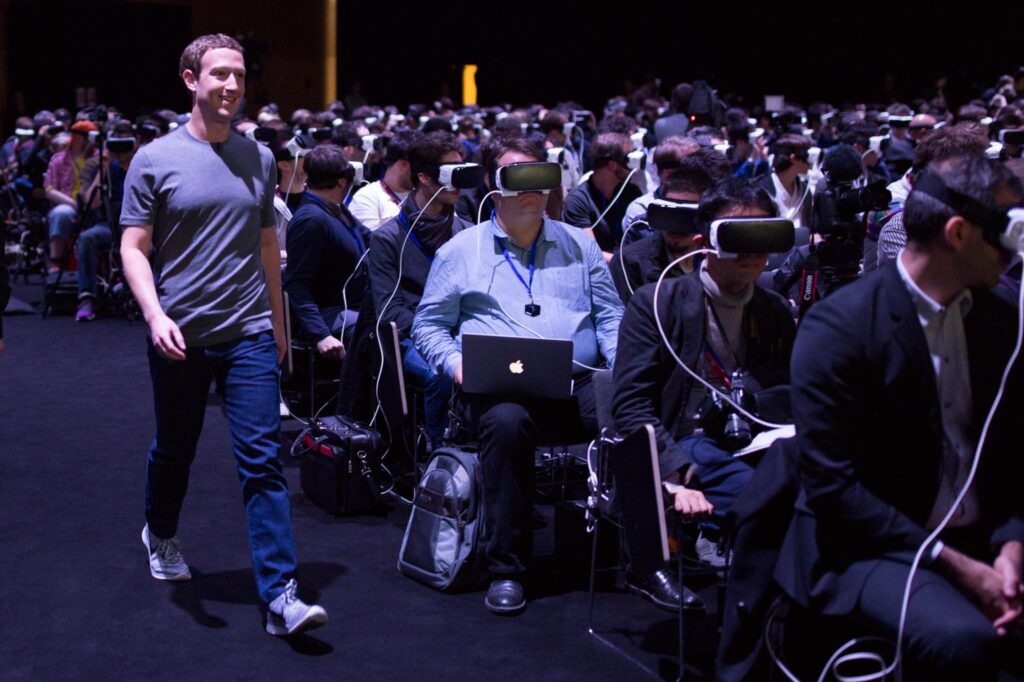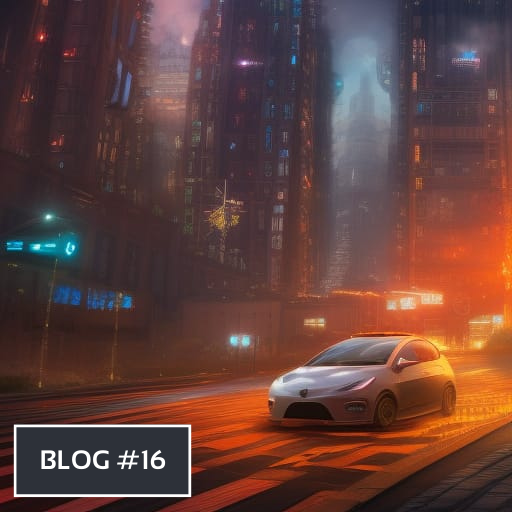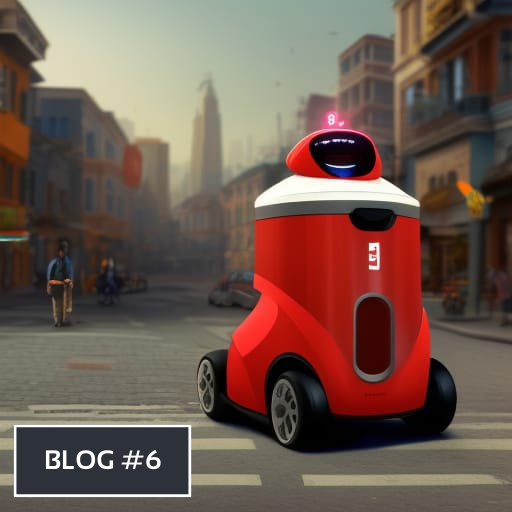Introduction
The Social Dilemma has been out for almost 2 months now and its impact seems to continue to grow as the days go by. With Tristan Harris, one of the documentary’s leading voices appearing on the wildly popular Joe Rogan Podcast only yesterday the awareness of the impact of social media seems to be reaching a wider and wider audience.
Personally I was fortunate enough to watch several of Jaron Lanier’s (who is featured in the documentary) keynote speeches over the years (ironically mostly via Youtube), and was exposed to a number of the documentary’s key arguments early on. However, one of the things that perhaps doesn’t get as much attention as it should is the medium (latops, tablets, cellphones) through which we have been ingesting social media over the years; and as is talked about on the podcast substantially, how the future might be different. In this blog post I want to briefly review the premise of the documentary (for those of you comfortable enough with the ideas, skip this part), and add to this by exploring how a few key technologies will expand the reach of social media’s ability to invade our lives even further.
“There are only two industries that refer to their customers as ‘users’: illegal drugs and software. ”
— Edward Tufte
Manipulation Based Business
Essentially, social media tech giants have developed architectures which manipulate their users (us) to stay on their platforms for longer and longer time periods. This is done deliberately as the entire tech ecosystem has adopted the ‘free-to-use’ model which employs advertisements blended into the content on the platforms. The businesses that put the ads on, then pay Facebook, Google, TikTok, Twitter, etc. This business model is well known and not surprising. However, what is surprising is that these platforms utilise a range of functions, (Eg. Facebook’s “Like” button and notification system, Google Inbox’s structure, Twitter’s follower and following statistics) and AI powered triggers (Youtube’s recommended videos based off of previous interest) to subtly nudge users to remain on the platform for more and more time. This manipulation based business model is at the root of the social problems outlined in the documentary. One of the main reasons is that this manipulation is not done by nefarious individual employees behind the scenes, but rather AI learning algorithms which try to maximise user engagement.
It just so happens that we have evolved to be attracted to certain key situations, namely negative information as this is how our ancestors were able to survive in the past.
Thus, out of basic survival necessity we tend to focus more on negative, or frustrating stimuli. This is also amplified by being a social animal, where social standing within a tribe has always been key. If there was a negative perception of you held by the rest of the tribe, you were liable to be banished, greatly reducing survivability and the possibility to procreate, essentially making us more tuned into negative feedback from our peers. Once the self-learning algorithms of the tech giants began to cue into this, realising that showing you a negative comment on a posted picture or video increases engagement and thus time on a platform, the battle was lost. In his appearance on the Joe Rogan podcast, Tristan Harris summed it up perfectly by stating that these tech giants have supercomputers aimed at our brains to show us the absolutely perfect thing to retain our attention.
The documentary further illustrates the negative effects that this has on us and society. Though I won’t detail this here, of particular note are the recent and drastic impacts on 1. teenagers (increased self harm, suicide, weight/body image issues etc), 2. the explosion of fringe ideas being accepted by larger groups of people (QAnon, Flat Earth Society, etc), and 3. the increased schism between political party supporters (especially in the USA).
With this in mind, the main idea of this blog post can be focused on, namely how emerging automation technologies are and will continue to provide new mediums through which we will be able to access social media where previously impossible, and in more impactful ways

How Emerging Tech will Enable more Social Media Ingestion
Three emerging techs that are getting a substantial boost in use from the impacts of Covid-19, this year are Autonomous Vehicles and Virtual & Augmented Reality. We have seen Waymo raise 3 Billion USD this year alone, Tesla continues to promise a full Lv5 autonomous vehicle by Christmas, Oculus Quest 2 announcement and arrival, etc. These technologies and their future impacts have been discussed further on the podcast, but their contribution to the societal problems that social media bring is something that needs to be explored as these technologies grow in use by the general population.
Autonomous Vehicles
One of the strongest arguments for the development and implementation of full level 5 autonomous vehicles is the reduced crash and death statistics that would occur by having an AI drive the vehicle. However what is often left out of this discussion is, if the driver no longer needs to look at the road during his/her commute, what does this mean for the vehicle design? One answer to that specifically refers to the windshield, or the smart windshield. Here’s how a smart windshield may work: A driver who’s close to running out of gas would see an alert pop up that notes the fuel situation and offers to find a nearby gas station. Sounds great, practical, and useful right? But it comes with a catch. The car’s virtual assistant offers a choice, again on the windshield, of two options, including directions to a station where the driver is eligible for a free cup of coffee — an ad placed by the gas company that fits with the driver’s buying patterns, also known by their smart car.
Panasonic Corp. demonstrated technology at CES, the consumer electronics show in Las Vegas in 2017, that lets a driver order and pay for fast food through a head-up display before pulling off the road to collect it. Pairing such offerings with other connected subscription services could generate hundreds of dollars in additional recurring revenue per car each year, according to Tom Gebhardt, the head of Panasonic’s automotive business in North America. Ignoring the fact that vehicle manufacturers are likely to shift part of or even their entire business model towards subscription if this future becomes a reality, the relevant part for this post is that the vehicle becomes a new advertising medium. Of course, vehicles have always allowed this, for the passengers, but as millions of people across the world use a vehicle to drive to work and back every day, with the average being about an hour both ways, the world’s tech giants are essentially breaking open the door to one of the last frontiers where digital ingestion has remained low.

Virtual Reality
It is no secret that Facebook has been making large moves into the VR space. The Oculus Quest released only in 2019 was seen as a game changer that renewed interest in the entire VR industry due to its untethered nature. Facebook has also announced the designs for Facebook Horizon its massively multiplayer VR shared universe, think a more Cartoony version of the ‘Oasis’ movie. This is part of Facebook’s multibillion dollar bet that a mixed or entirely virtual reality meeting space will be the next medium in which we all communicate, supplanting the internet itself, and Horizon might be the platform which we use to connect. The problem of course is that we users won’t just visit Facebook’s web site, or launch its app; instead we will, literally live and interact in Facebook’s digital bubble. The concern of course lies in whether Facebook keeps its user manipulation business model as explained by the social dilemma and we will interact in a highly immersive virtual world that is constantly trying to keep us engaged with more and more outrageous prompts while showing us a constant stream of advertisements. Currently, though we are at times ‘trapped’ in social media, scrolling for 20 minutes when we intended to only check a single post, I do not see our ability to pull away so ‘easily’ being possible while being fully immersed in a virtual world. Essentially we could find ourselves in the corporate digital advertisement and pay-to-play dystopia envisioned by Nolan Sorreto in the Oasis…
Augmented Reality
Perhaps the issues with augmented reality was exemplified best by the 1 minute Admented reality parody video of the failed Google Glass product that went Viral back in 2012. Though the augmented reality glasses were perhaps too early for their time, the message is still the same today.
Back in February 2012 Sebastian Anthony wrote about the then-rumored Google glasses on Extreme Tech saying – “Remember, Google is ultimately an advertising company, where eyeballs directly translate into money — and it’s hard to get any closer to your eyes than a pair of augmented reality glasses. When you look at a car dealership, Google will be able to display ads from a competitor. When you sit in front of a computer, or TV, or stare through a shop window, the glasses will be able to track your head movements and report back on the efficacy of display ads. Perhaps most excitingly, when you read a newspaper or book or other static medium, Google could even overlay its own, interactive ads.”
Though this pointed directly to Google, the same argument can also be levied against all of the tech giants that enter this space.
Final Thoughts
Though I have not explored the topic of Brain machine interface technologies like Elon Musk’s Neuralink on the podcast as it is a bit out of scope, taking the above ideas into consideration it should make even the most techno-positivist transhumanist pause. If we are ingesting these platforms through a physically disconnected medium like a cell phone and see the kinds of social and individual psychological harms that are outlined in the documentary, the idea of having instant and truly direct access to say Facebook with nothing but a simple thought, it is not a great leap to say that the harm caused to our society could become immeasurable.
Though I typically fall, or at least lean, towards being a techno-optimist, documentaries such as the Social Dilemma are essential to curve any overly enthusiastic uncritical acceptance of new technologies.






